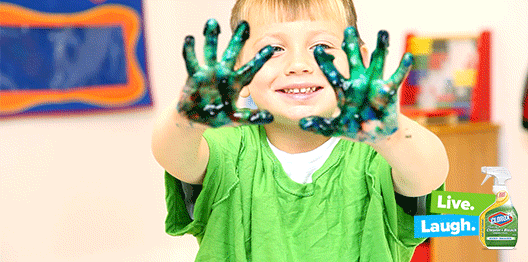
Paige DeShazo
Early Childhood Education
Ick!!! Icky Sticky!!
Beginning Reading Design
Paige DeShazo
Rationale: This lesson is designed to help children identify /i/, the phoneme represented by I. Students will learn to recognize /i/ in spoken words by learning a visual interpretation of the phoneme. To accomplish this, we will make a bad face and act like we have something sticky and gross on our hands and shout “Ick!! Icky Sticky!!” We will practice finding words that contain /i/, and apply phoneme awareness with /i/ in phonetic cue reading by distinguishing rhyming words from beginning letters.
Materials: Primary paper and pencil; Tin Man Fix-It book; picture that represents Icky Sticky! cards with the words TIP, BRICK, SPLIT, MINT, SKIP, and SIP; paper with tongue tickler: “The important Indian was ill with injuries inside the igloo”; coloring page with a tin man and coloring pencils; assessment worksheet identifying pictures with /i/ (URL below).
Procedures:
1. Say: Our written language is a secret code. The tricky part is learning what each letter stands for – the mouth moves as we make words come out of our mouth. For each letter and sound, our mouth moves differently. Today, we are going to work on making our mouth move and say /i/. We spell /i/ with the letter I. When we have a mess on our hands we say iiiiiiii because it’s icky.
2. Let’s pretend we are gluing a piece of paper to our artwork and we got some glue on our hands. We hold them up and say iiiiiii. Notice how our mouth widens (show: how our lips come back). As your mouth widens you are blowing air out of your mouth to say iiiii, (/i/).
3. Let me show you how to hear and find /i/ in the word blimp by listening and using a letter box lesson. First, I’m going to stretch the word blimp out in super slow motion and make sure you listen for iiiiick! Icky Sticky! Bbb-ll-iii-mm-pp. Slower: Bbb-ll-iii-mm-pp. Yes! There we go!! I felt my lips widen and air come out of my mouth. I can feel iiick! Icky Sticky! /i/ in blimp. Now we are going to use the word blimp in a letterbox lesson. We have the letters, b, l, i, m, p. We are going to have five different boxes, and we have to figure out which letter goes in which box, and then find our sound /i/. The first letter that we hear in the word blimp is, /b/. Then we can follow /b/ with the other phonemes that we hear. /l/ /i/ /m/ /p/. Which box do we find our sound from Ick! Icky Sticky!? Three! Exactly, that is correct! Now that we have recognized the letter, and have been able to hear it in a word, as well as see it in the same word through a letter box lesson.
4. Let’s try a tongue tickler together: (hold up sheet of paper) “The important Indian was ill with injuries inside the igloo.” Now let’s say it three good times together. Say it one more time, but make sure you stretch out the /i/ in the words. “The iiiimportant IIInndiiiaan was iiiiillll wiiitttthh iiiiiiinnjuuurriiieeess iiiiiinsiidee the iiiigglloo.” Okay, this is the last time but now break the /i/ off of the word: “The /i/mportant /I/nd/i/an was /i/ll with /i/jur/i/es /i/nside the /i/gloo.
5. (Have students take out primary paper and pencil). We have been using the letter I to spell /i/. When we say iiiii, we think of Icky! Sticky! Let’s draw the lower case i. start at the fence in the middle. Pull the I all the way to the sidewalk at the bottom, and then stop. Above the fence in the middle, but not quite to the rooftop, make sure you give the i a dot for his head. I am going to walk around to see everyone’s Icky! Sticky! I. After I give you a smiley, I want you to draw it like that four more times.
6. Call on students to answer and tell which words they hear /i/ in. Do you hear /i/ in snap or sip? Fin or fun? Strip or send? In or an? Stiff or sore? Say: lets see if your mouth widens and blows air out of the mouth when spotting /i/ in some words. Hold your hands up if you hear /i/: lip, on, skip, brick, score, far, rip, week.
7. Say: “Let’s now look at our new book, Tin Man Fix It, that tells us about tin man that has to be fixed!” Read the story and then at the end of each page, ask students to find each word that has /i/ in it. Have the student to stretch out each word that has /i/. Then after the book, have the students color the picture of the tin man making him Icky! Sticky! Or when he is fixed at the end of the book. Make it a competition to see who can have the most creative tin man, and display them in the classroom.
8. Show TIP and model how to decide if it is tip or tap: the i says that it is iiickkkky, /i/, so this word is tiiiip. Now you try some: BRICK: brick or bright? SPLIT: spun or split? MINT: meet or mint? SKIP: Stan or skip? SIP: sat or sip?
9. Assessment: (hand out the worksheets) Say: on the left side on the paper is India, III-ndia. On the right side are pictures, and some have /i/ in them and some do not. As I read each picture, if it has /i/ in them, draw a line that connects it to III-ndia, India.
Assessment Worksheet: http://www.kidzone.ws/kindergarten/vowels/i-begins1.htm
Reference: Example: Brush Your Teeth with F.
Book: Tin Man Fix It, https://auburn.instructure.com/courses/1103232/pages/educational-insight-decodable-books
Click Here to Return to Applications:
http://wp.auburn.edu/rdggenie/home/classroom/applications/Links to an external site.
